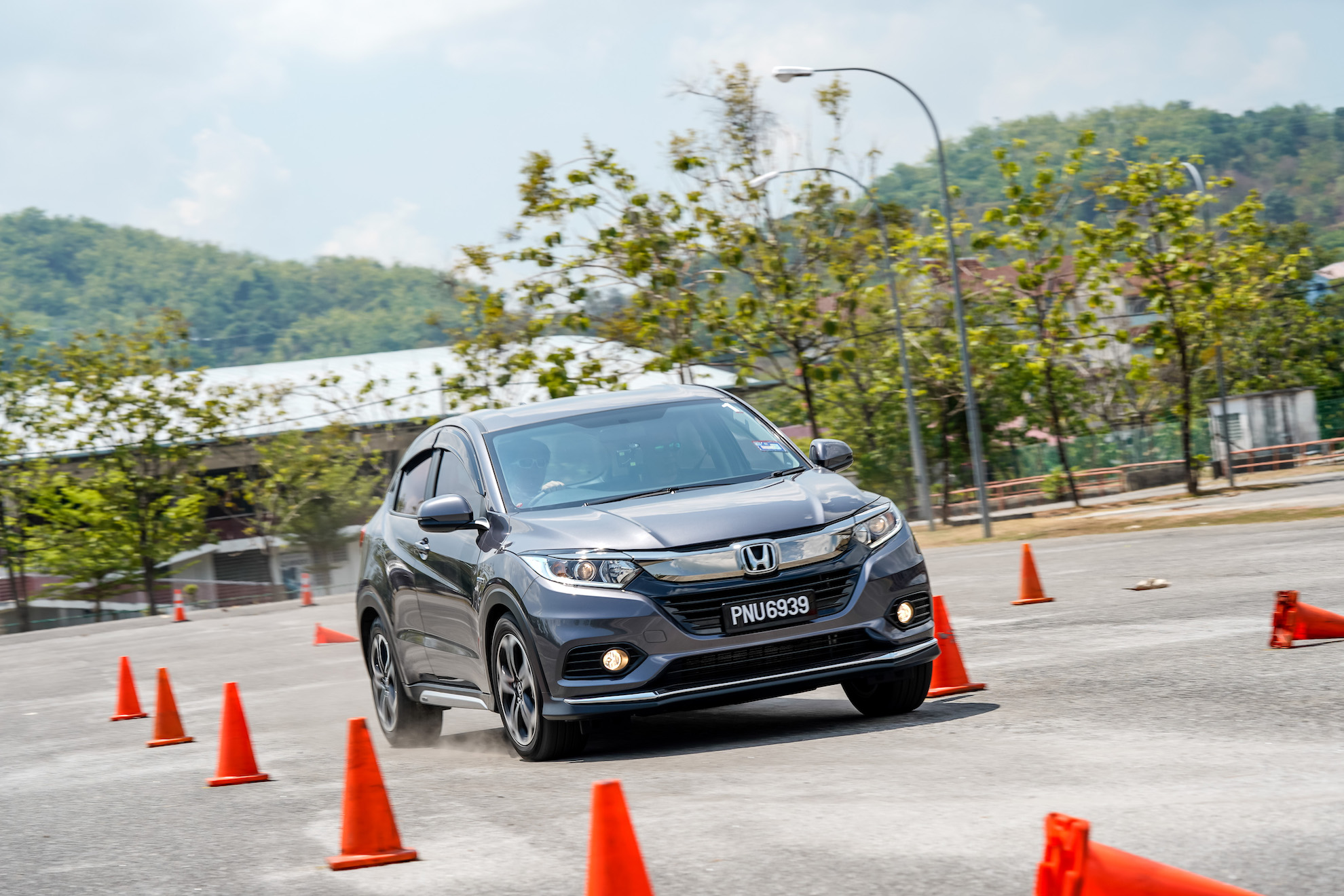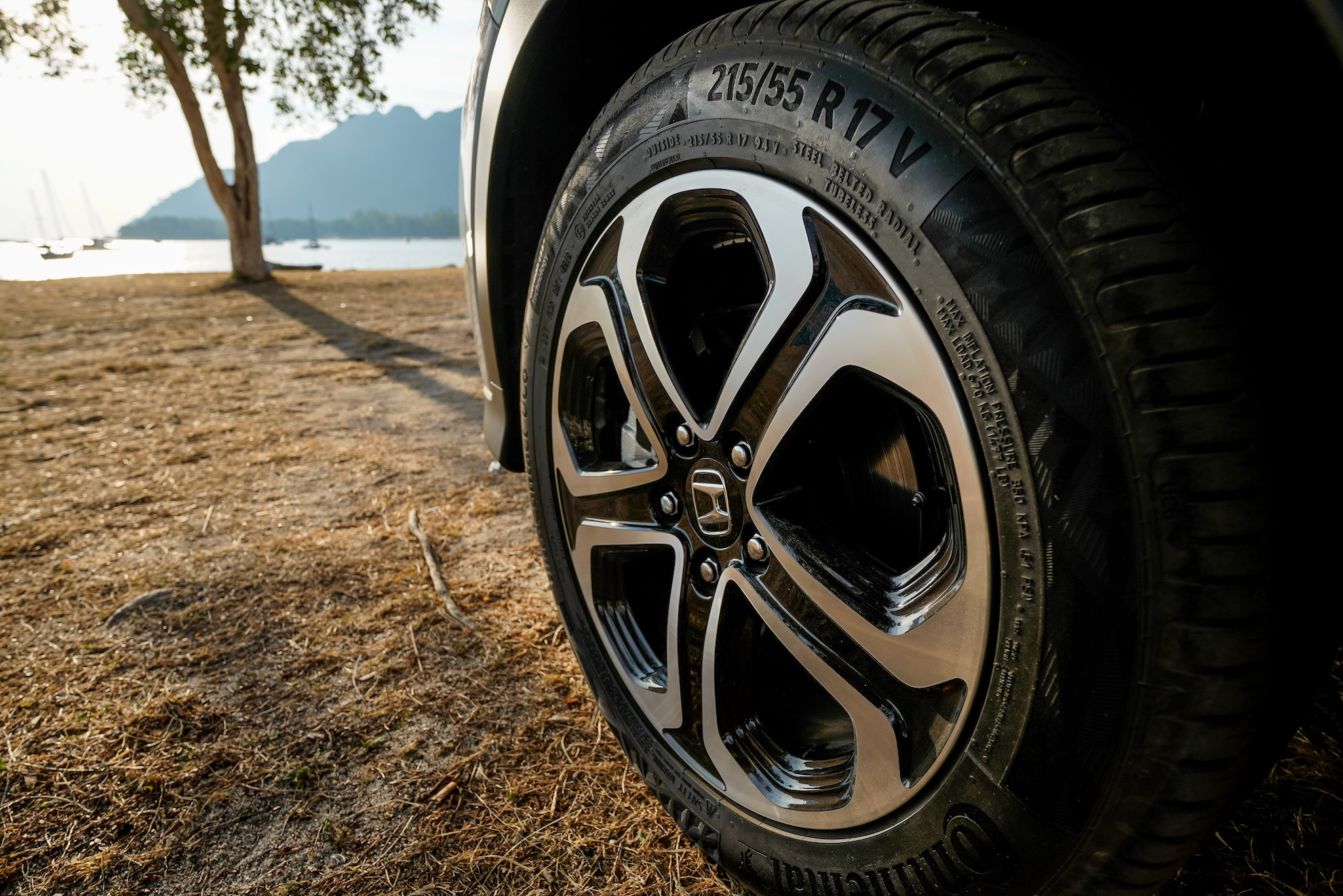BEHIND THE WHEEL
Honda HR-V Hybrid Preview: Boosted By Electricity, Worth The Extra Charge?
Without the 'Hybrid' nameplate, you'd think that this Honda HR-V is just as extraordinary as the one beside it. Indeed, pre- and post-facelifted models look near identical with the grille being the most noticeable change when, in fact, nearly everything from the waist down has its design refreshed.
On the whole, Honda hasn't shaken the formula that made the HR-V one of the best-selling brands this side of this spherical Earth, notching a figure of more than 76,000 units sold up to February 2019. Space and value-added features seem to be the top two priority in the purchase decision.

To date, only two HR-V variants received more than just surface tweaks — be it cosmetically and mechanically. The HR-V RS that we sampled last year is fitted with parts to make the B-segment SUV handle the best in the range. And then, there's the vehicle of the day — the HR-V Hybrid that promises an un-boring but efficient drive. However, the length of the trip didn't allow the full exploitation of the fuel economy.
Straight out of the box, the HR-V Hybrid feels promising. By choosing to forgo the Atkinson Cycle 1.5-litre engines found in the Jazz Hybrid and City Hybrid, the HR-V moves around with a 1.5-litre engine with direct injection.
No performance figures were given, but you won't complain about the SUV feeling underpowered. From the hybrid powertrain comes a combined output of 150hp and 190Nm of torque.

With a seven-speed dual-clutch to complete the drive train, this HR-V displays an acceleration that's strong and very linear, very much like a sweetly-tuned 2.0-litre naturally-aspirated engine. Having said that, accelerating at speed, especially during overtaking, the HR-V does not get on the ball as quickly as I would have liked. The remedy comes from one of two places - the 'Sport' button on the transmission tunnel or flicking the paddle shifters will kick the gears down quicker to aid in picking up more speed.
On the flip slide, if you wiggle around carparks looking for an empty lot, then the HR-V will automatically draw power and motivation from the battery and electric motors. This will save you some amount of fuel, and it would be safe to say that it will continue strolling in EV till there's nothing left in the battery.

Aside from the powertrain, the chassis seems to have been sorted. The ride of the previous HR-V showed more lateral movement in addition to the horizontal fluctuations every time it negotiates (or crashes through) rougher roads. Although I have not driven the non-hybrid, non-RS HR-V for comparison, HR-V Hybrid re-tuned suspension seems to have negated the unpleasant effect. I felt that the ride is more comfortable than before, no matter if you're in the front seat or back; albeit a hint of firmness.
Yes, the battery pack does take up some space, but it isn't much — 437 litres in the non-hybrid versus 404 litres in the Hybrid. It is a difference that you won't notice.

The Honda HR-V Hybrid is priced at RM120,800 (on-the-road, without insurance), which still makes it one of the most affordable B-segment SUV on the market. Although the test drive is short, there isn't anything fundamentally damning about the vehicle.
If anything, it is sportier than ever. Together with the promise of better fuel economy, then the HR-V Hybrid is one of the more sensible vehicle purchase you can make.

















On the whole, Honda hasn't shaken the formula that made the HR-V one of the best-selling brands this side of this spherical Earth, notching a figure of more than 76,000 units sold up to February 2019. Space and value-added features seem to be the top two priority in the purchase decision.

To date, only two HR-V variants received more than just surface tweaks — be it cosmetically and mechanically. The HR-V RS that we sampled last year is fitted with parts to make the B-segment SUV handle the best in the range. And then, there's the vehicle of the day — the HR-V Hybrid that promises an un-boring but efficient drive. However, the length of the trip didn't allow the full exploitation of the fuel economy.
Straight out of the box, the HR-V Hybrid feels promising. By choosing to forgo the Atkinson Cycle 1.5-litre engines found in the Jazz Hybrid and City Hybrid, the HR-V moves around with a 1.5-litre engine with direct injection.
No performance figures were given, but you won't complain about the SUV feeling underpowered. From the hybrid powertrain comes a combined output of 150hp and 190Nm of torque.

With a seven-speed dual-clutch to complete the drive train, this HR-V displays an acceleration that's strong and very linear, very much like a sweetly-tuned 2.0-litre naturally-aspirated engine. Having said that, accelerating at speed, especially during overtaking, the HR-V does not get on the ball as quickly as I would have liked. The remedy comes from one of two places - the 'Sport' button on the transmission tunnel or flicking the paddle shifters will kick the gears down quicker to aid in picking up more speed.
On the flip slide, if you wiggle around carparks looking for an empty lot, then the HR-V will automatically draw power and motivation from the battery and electric motors. This will save you some amount of fuel, and it would be safe to say that it will continue strolling in EV till there's nothing left in the battery.

Aside from the powertrain, the chassis seems to have been sorted. The ride of the previous HR-V showed more lateral movement in addition to the horizontal fluctuations every time it negotiates (or crashes through) rougher roads. Although I have not driven the non-hybrid, non-RS HR-V for comparison, HR-V Hybrid re-tuned suspension seems to have negated the unpleasant effect. I felt that the ride is more comfortable than before, no matter if you're in the front seat or back; albeit a hint of firmness.
Yes, the battery pack does take up some space, but it isn't much — 437 litres in the non-hybrid versus 404 litres in the Hybrid. It is a difference that you won't notice.

The Honda HR-V Hybrid is priced at RM120,800 (on-the-road, without insurance), which still makes it one of the most affordable B-segment SUV on the market. Although the test drive is short, there isn't anything fundamentally damning about the vehicle.
If anything, it is sportier than ever. Together with the promise of better fuel economy, then the HR-V Hybrid is one of the more sensible vehicle purchase you can make.
















